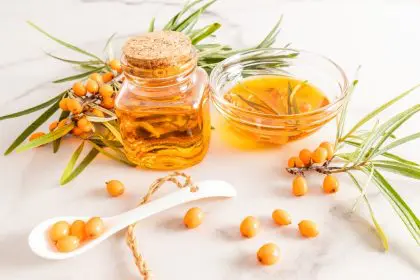That jar of honey sitting in your pantry and the garlic bulbs on your kitchen counter might be more than just cooking ingredients. When combined, they form a powerful duo that grandmothers around the world have sworn by for centuries. But does this sweet-and-pungent combination really live up to its immune-boosting reputation, or is it just another folk remedy that sounds better than it works?
As cold and flu season approaches, everyone seems to have their own secret weapon against getting sick. Before you dismiss the garlic-honey combo as just another wellness trend, let’s look at what actually happens in your body when you consume this unusual but potentially powerful pairing.
The individual powerhouses
Before understanding their combined effects, it’s worth appreciating what each ingredient brings to the table individually. Garlic isn’t just for keeping vampires at bay—it’s one of the most studied natural immune boosters available.
Allicin, the compound responsible for garlic’s distinctive smell, has documented antibacterial, antiviral, and antifungal properties. When you crush or chop garlic, you trigger an enzyme reaction that creates allicin. This potent compound has been shown to enhance immune cell function and reduce the severity and duration of cold and flu symptoms.
Garlic also contains sulfur compounds that stimulate certain immune cells, potentially enhancing your body’s natural defense mechanisms. Regular garlic consumption has been linked to fewer and less severe colds and other infections in several human studies.
Honey, meanwhile, brings its own impressive resume. Raw, unpasteurized honey contains enzymes, antioxidants, and antimicrobial compounds that can help fight infections. It’s particularly effective against certain bacterial infections and has been used medicinally since ancient times.
The natural hydrogen peroxide in honey, along with its acidity and low water content, creates an environment hostile to many types of bacteria. Certain varieties like Manuka honey have additional antimicrobial compounds that make them even more potent against pathogens.
The synergistic effect
When garlic and honey join forces, something remarkable happens. The combination creates a synergistic effect where each enhances the beneficial properties of the other.
The preservative qualities of honey help stabilize the active compounds in garlic, particularly allicin, which typically degrades quickly after garlic is crushed. By submerging garlic in honey, you create an environment where these compounds remain viable longer.
At the same time, garlic enhances honey’s antimicrobial properties through added allicin and other sulfur compounds. This tag-team approach targets pathogens more effectively than either ingredient alone.
The combination also addresses one of the biggest downsides of raw garlic consumption—the intense flavor and smell that can linger for hours. Honey’s sweetness makes the mixture more palatable, encouraging consistent use which is key for immune benefits.
The inflammation connection
One of the most significant ways garlic and honey support immune function is through their anti-inflammatory effects. Chronic inflammation weakens immunity by keeping your immune system constantly activated and eventually exhausted.
Garlic contains diallyl disulfide and other organosulfur compounds that reduce inflammatory markers in the body. These compounds help regulate cytokine production—signaling proteins that coordinate immune responses—preventing the excessive inflammation that can damage tissues.
Honey contains flavonoids and phenolic acids with potent anti-inflammatory properties. These compounds inhibit certain pathways that trigger inflammation, helping to restore balance to an overactive immune response.
Together, they address inflammation from multiple angles, creating an internal environment where your immune system can function optimally rather than being constantly triggered by inflammatory processes.
The gut health factor
Perhaps the most overlooked way this combination boosts immunity involves your gut. About 70% of your immune system resides in your gut, making digestive health crucial for overall immune function.
Raw honey acts as a prebiotic, feeding beneficial gut bacteria that support immune function. These good bacteria crowd out harmful pathogens and produce compounds that strengthen the gut barrier, preventing unwanted substances from triggering immune reactions.
Garlic contains inulin and other prebiotic fibers that specifically nourish beneficial Bifidobacteria and other protective gut microbes. It also has antimicrobial effects against harmful gut pathogens while generally sparing beneficial bacteria.
The combination effectively acts as a gut health tonic, selectively supporting the microbial populations that strengthen immunity while discouraging those that might compromise it.
The antioxidant angle
Free radical damage weakens immune cells and impairs their function. Both garlic and honey are rich in antioxidants that neutralize these damaging molecules, but they contain different types that work through complementary mechanisms.
Garlic is rich in organosulfur compounds and selenium, which boost the production of glutathione—often called the master antioxidant—in immune cells. This internal antioxidant helps immune cells function at peak efficiency and protects them from damage during their battles against pathogens.
Honey contains pinocembrin, pinobanksin, chrysin, and other flavonoids with potent antioxidant effects. These plant compounds scavenge free radicals directly, reducing oxidative stress throughout the body, including in immune tissues.
By addressing oxidative stress through multiple pathways, the garlic-honey combination helps maintain the structural integrity and functional capacity of immune cells better than either ingredient alone.
How to make and use it
Creating a garlic-honey infusion is surprisingly simple. Peel and slice or crush several cloves of fresh garlic and submerge them completely in raw honey in a clean glass jar. The ratio isn’t exact, but aim for about 8-10 cloves per cup of honey.
Let the mixture infuse at room temperature for at least a week before using, though many traditional recipes call for infusing for much longer—some suggest up to a month or more. The honey will become more liquid as the garlic releases its moisture, creating a syrup-like consistency.
Take one to two teaspoons daily as a preventative measure during cold and flu season. For acute symptoms, some traditional practices suggest increasing to a teaspoon every few hours, though you should start with smaller amounts to see how your body responds.
The mixture can be taken straight off the spoon, stirred into warm water or tea, or drizzled over foods. Just avoid adding it to boiling water or cooking it, as heat destroys many of the beneficial compounds.
The limitations to consider
While promising, the garlic-honey combination isn’t a miracle cure or substitute for medical care. It works best for prevention and supporting recovery from minor illnesses rather than treating serious conditions.
Individual responses vary based on factors like gut microbiome composition, existing inflammation levels, and underlying health conditions. Some people notice immediate benefits, while others might need consistent use over weeks to see results.
There are also some who should approach with caution. Garlic has mild blood-thinning effects, which could interact with blood-thinning medications. People with diabetes should monitor blood sugar levels when consuming honey regularly. And those with severe allergies to either ingredient should obviously avoid this remedy.
Raw honey should never be given to infants under 12 months due to the risk of botulism spores, which their immature digestive systems can’t handle properly.
This ancient remedy offers a simple, accessible way to support immune function through multiple mechanisms. By combining two ingredients with complementary properties, you create a whole greater than the sum of its parts. Next time you feel a scratchy throat or notice everyone around you getting sick, this sweet-and-spicy combination might be worth reaching for—just as our ancestors have for generations.
















